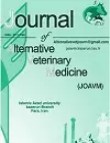Cloning and Expression of Catechol 2,3-Dioxygenase Genes of Streptomyces Living in the Soil in Escherichia Coli Bacteria to Remove Oil Pollutants
Today, the widespread use of petroleum products has led to environmental pollution and has created serious problems for the health of the environment. Streptomyces make up 50% of the total population of soil actinomycetes are filamentous, gram-positive, and essentially aerobic. These bacteria are abundant in natural aquatic and terrestrial environments, are not nutritionally hardy, require only a source of carbon and nitrogen along with mineral salts, and they are able to remain in the soil as spores for a long time. The aim of the study was to clone the Streptomyces catechol 2, 3-dioxygenase gene (C2,3) gene present in the soil in Escherichia coli bacteria in order to remove oil pollutants.
In this study, 58 samples were collected from a depth of 5 to 10 cm in different areas of the suburb of Tehran and oil contaminated areas such as the oil depot and its surroundings. After culturing, diluting and selecting suspicious Streptomyces colonies for identification, after confirmation of Streptomyces bacteria based on colony appearance, microscopic characteristics, and biochemical tests for final confirmation of molecular identification, their 16srRNA sequence was amplified and replicated, was examined. In the next step, after DNA extraction of the samples, PCR was used to amplify the C2,3 gene. The C2,3 gene was then cloned into Escherichia coli Origami by PTG19-T vector. Finally, the amount of gene expression was determined by Real Time PCR and after sequencing the phylogenetic tree was drawn.
The enzyme catechol 2, 3-dioxygenase can be extracted from limited sources such as Streptomyces, so the need for gene amplification of this enzyme is important from the bacterial sources that produce it. Therefore, in this study, this enzyme was isolated from Streptomyces. As a result of this study, we were able to find native Streptomyces that produce the enzyme catechol 2, 3-dioxygenase, and finally, the gene of this enzyme was successfully introduced into Escherichia coli Origami.
In this study, in order to create of a recombinant host with high expression capacity, it can be considered a big step towards increasing the production of this enzyme in the industry. Further investigation to find new strains producing catechol 2, 3-dioxygenase can lead to a new method of removing oil contaminants.
- حق عضویت دریافتی صرف حمایت از نشریات عضو و نگهداری، تکمیل و توسعه مگیران میشود.
- پرداخت حق اشتراک و دانلود مقالات اجازه بازنشر آن در سایر رسانههای چاپی و دیجیتال را به کاربر نمیدهد.




